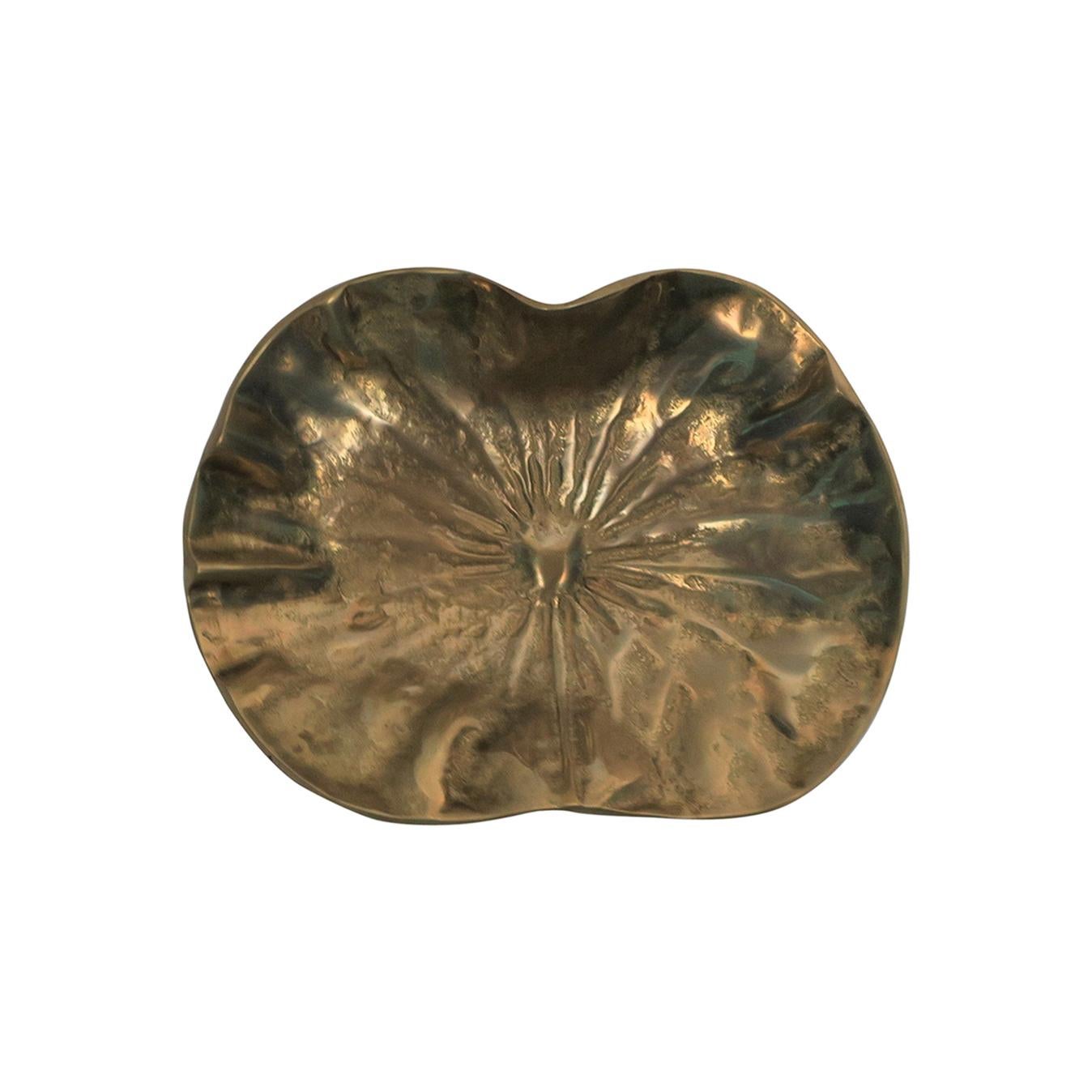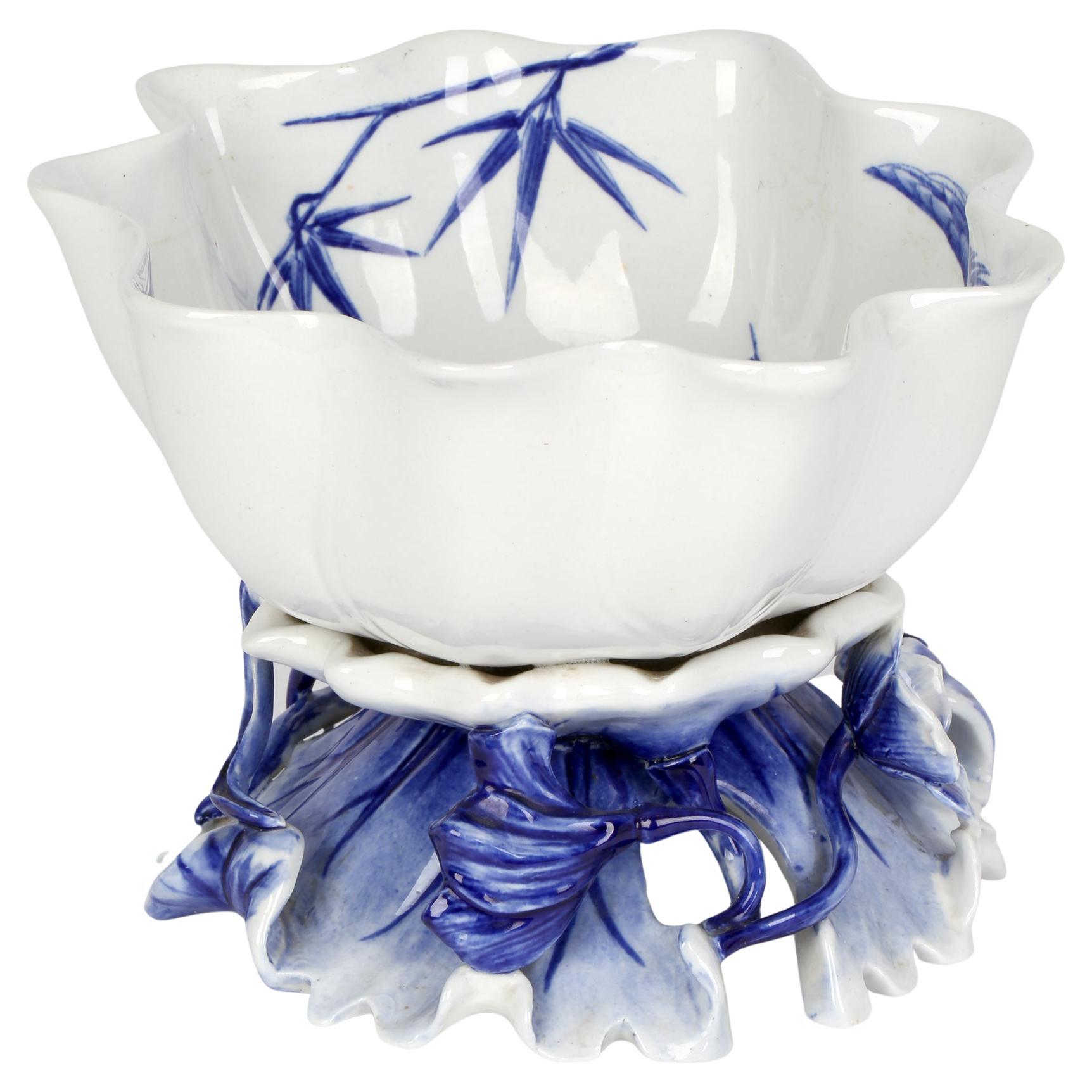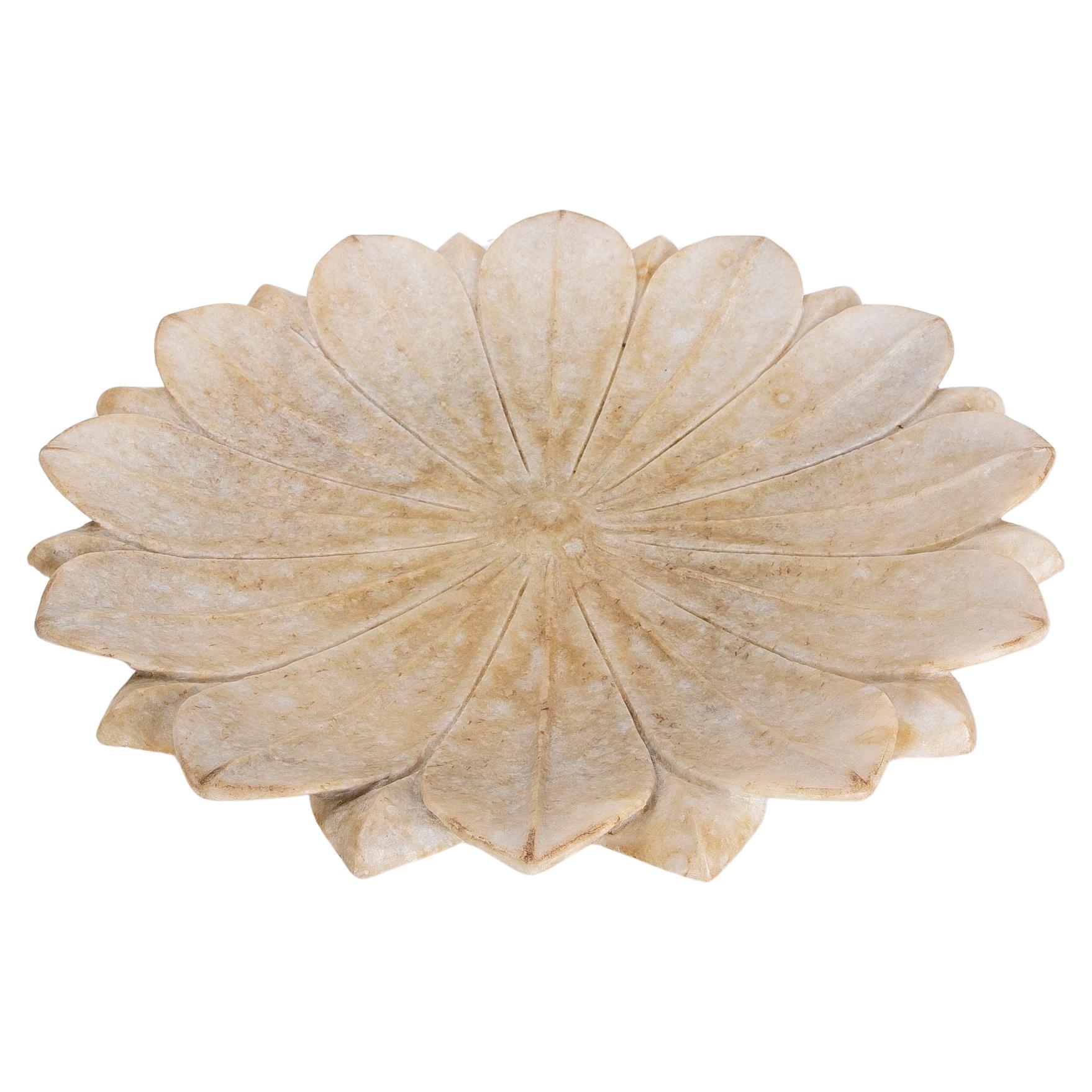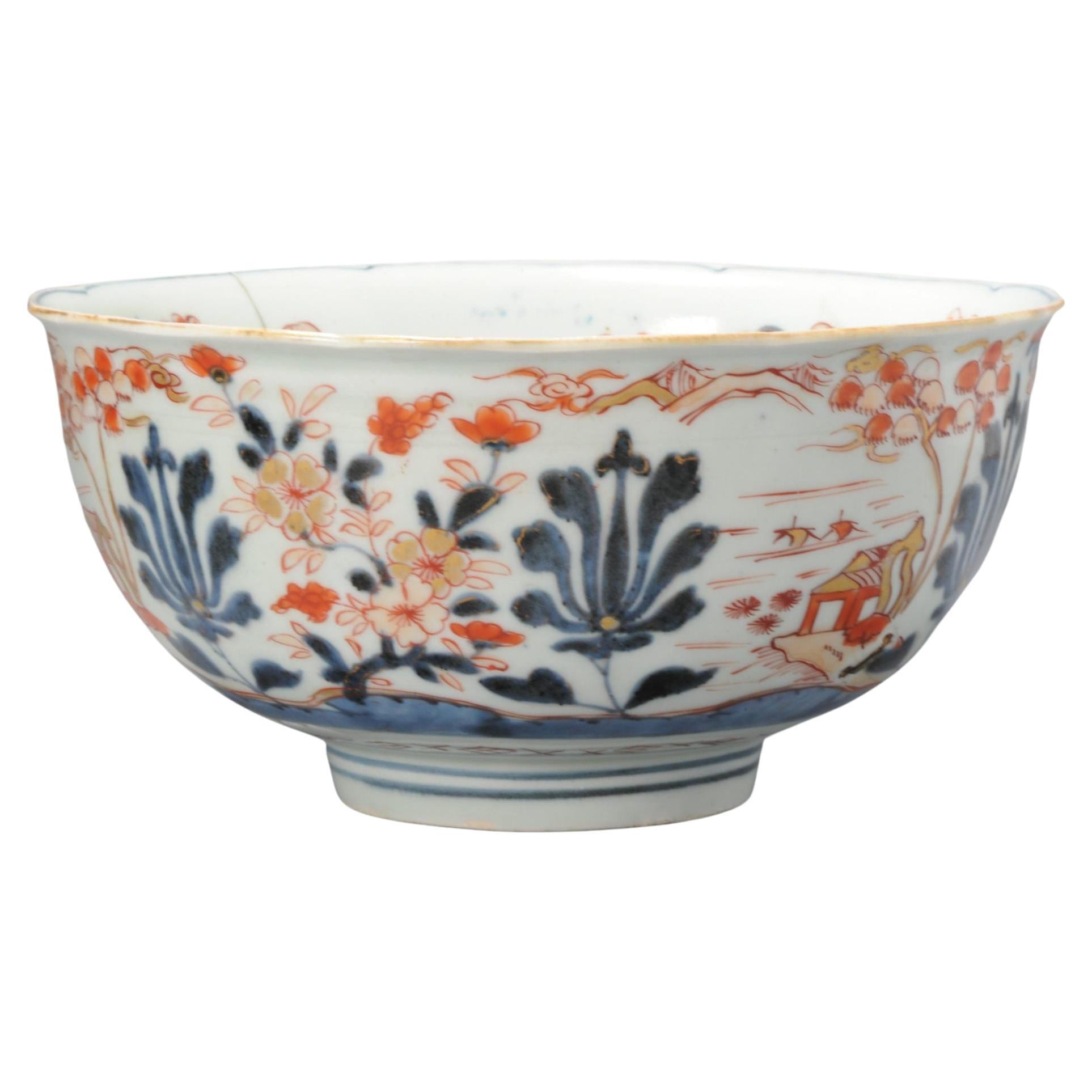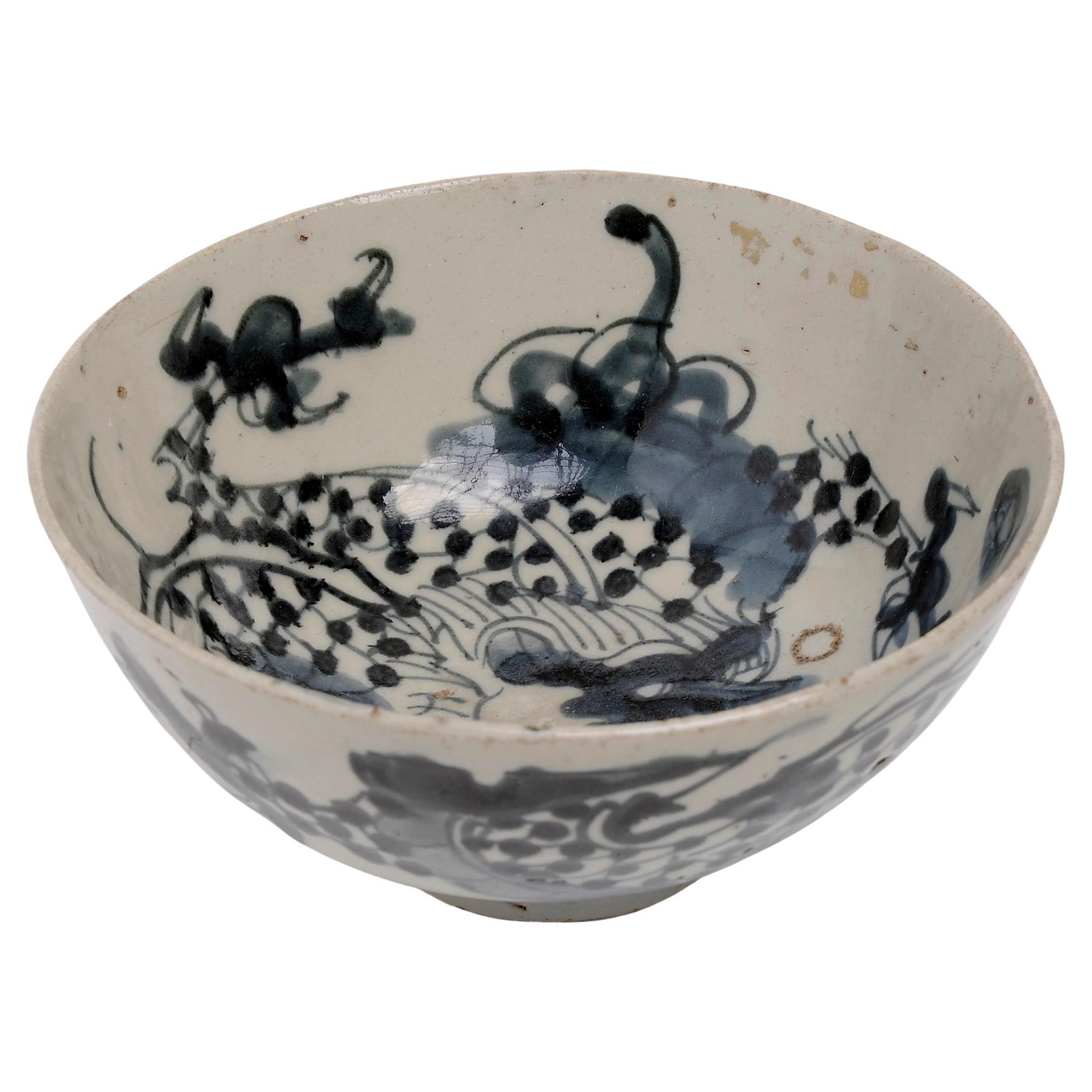Items Similar to Ancient Minoan Lotus Flower Vase
Video Loading
Want more images or videos?
Request additional images or videos from the seller
1 of 9
Ancient Minoan Lotus Flower Vase
About the Item
Minoan Lotus vase
Circa 1700-1450 B.C.
Serpentine stone
8.9 cm x 14 cm
‘’The fruitful isle of Crete, well known to fame,
Sacred of old to Jove's imperial name,
In the mid-ocean lies, with large command,
And on its plains a hundred cities stand.’’
- Virgil, Aenead
Finely worked in the form of a blossoming flower, this exceptional serpentine vase was crafted at the height of the Minoan culture of Ancient Crete - one of the earliest great civilisations of Europe, renowned, both in their own day and ours, for the sophistication of their arts. The Minoans arduously carved vessels from a variety of stones, and favoured these blossom forms above all. Once lidded, they might have been used to store oils and ointments. The subtly carved ribbed petals are a testament to the Minoans’ love of nature, and a prime example of the delicate organic motifs which have come to characterise their rich artistic production.
"In the manufacture of stone vases, the Minoans displayed enormous patience, as well as very high levels of confidence and skill. It was a craft that evolved into an art form…"
Rodney Castleden, Minoans: Life in Bronze Age Crete (Routledge, 2002), p. 88
Provenance:
- From the collection of Charles Gillet (1879-1972).
- Subsequently in the collection of Marion Schuster.
- Subsequently Sotheby's, New York, 7 December 2001, lot 58.
- Subsequently in the collection of nuclear physicist Heinrich Medicus (1918-2017).
Published:
- ArtAncient, Timeline (2019).
- Dimensions:Height: 3.51 in (8.9 cm)Diameter: 5.52 in (14 cm)
- Style:Other (Of the Period)
- Materials and Techniques:
- Place of Origin:
- Period:
- Date of Manufacture:circa 1700-1450 B.C.
- Condition:
- Seller Location:London, GB
- Reference Number:
About the Seller
5.0
Recognized Seller
These prestigious sellers are industry leaders and represent the highest echelon for item quality and design.
Established in 2008
1stDibs seller since 2014
100 sales on 1stDibs
Typical response time: 7 hours
Associations
LAPADA - The Association of Arts & Antiques DealersInternational Confederation of Art and Antique Dealers' AssociationsThe British Antique Dealers' Association
- ShippingRetrieving quote...Ships From: London, United Kingdom
- Return PolicyA return for this item may be initiated within 14 days of delivery.
More From This SellerView All
- Ancient Greek Perfume BottleLocated in London, GBAthenian Black-glaze perfume pot with inscription Athens, c. 425-400 B.C. Terracotta Measures: Height: 9cm; diameter across lip: 7.5cm; width including handle: 9cm This 5th Cen...Category
Antique 15th Century and Earlier Italian Classical Greek Bottles
MaterialsPottery
- Ancient Greek Corinthian HelmetLocated in London, GBCorinthian helmet with Bull Horns and Lotus Flower Decoration. Archaic Period, c.550-500 BC. Cast, hammered and incised bronze. An exceptionally well preserved example of one of the most iconic ancient Greek...Category
Antique 15th Century and Earlier European Classical Greek Mounted Objects
MaterialsBronze
- Ancient Silver Celtic Tetradrachm CoinLocated in London, GBCeltic ‘Dachreiter’ Tetradrachm Minted in Eastern Europe, circa 1st-2nd Century B.C. Silver A magnificent Celtic tetradrachm of the Dachreiter (“roof-rider”) type, minted by a C...Category
Antique 15th Century and Earlier Mounted Objects
MaterialsSilver
- Ancient Egyptian Monumental Temple SphinxesLocated in London, GBA pair of monumental limestone sphinxes of Pharaoh Nectanebo I, from the processional avenue of the Serapeum of Memphis, 30th Dynasty, circa 379 - 360 BC. The sphinxes of the Serapeum have captivated travellers since Roman times. However, despite their significance, they are conspicuously absent from the collections of most major museums. Indeed, their existence in private hands is so improbable, and their imitations so numerous, that the present sphinxes were assumed to be modern copies throughout their recent ownership history. Finally recognised and conserved after an extraordinary chance discovery at a garden furniture sale...Category
Antique 15th Century and Earlier Egyptian Egyptian Figurative Sculptures
MaterialsLimestone
- Ancient South Arabian Alabaster StatueLocated in London, GBSouth Arabian Calcite female figure 3rd Century BC to 1st century A.D. Calcite Alabaster height: 30.5 cm A magnificent alabaster female figure, a f...Category
Antique 15th Century and Earlier Yemeni Figurative Sculptures
MaterialsAlabaster
- Ancient South Arabian Alabaster InscriptionLocated in London, GBSouth Arabian Alabaster Inscription Calcite Alabaster circa 1st century A.D. ‘’Consequently, neither white marble of Paros nor any other stone which men admire can be compared with the precious stones of Arabia, since their whiteness is most brilliant, their weight the heaviest, and their smoothness leaves no room for other stones to surpass them.’’ - Diodorus Siculus, Library of History, Book II, 52.9 This inscription, finely worked on an alabaster tablet, is a remarkably well preserved example of Ancient South Arabian script, with its distinct bold, angular forms, written in the Qatabanic dialect - that is, the dialect spoken by the people of the kingdom of Qataban, which ruled much of modern day Yemen from the 7th Century B.C. to the 2nd Century A.D. The text, which reads: ‘[... ...]sa?d and Ma?add?i- / (of the lineage) of Hawfa- / She entrusted Anb- / against any malfeasance (which would remove it) from its place’ - indicates that it likely served to commemorate a temple offering. The quality of the script, incised so neatly into the surface of the alabaster, tells us that this piece was commissioned by somebody of considerable wealth and prestige, employing a scribe of equally considerable expertise. South Arabia was known throughout the ancient world for its incredible wealth - so much so that the Romans termed the region ‘Arabia Felix’ - literally, ‘Happy, or Fortunate, Arabia.’ That wealth was built largely on the trade of spices and incense, in which the Kingdom of Qataban played a major part. According to Pliny the Elder, this was the sole country through which frankincense could be exported, first being collected in the city of Shabwa, on the South Arabian coast, and from there travelling by camel up to Gaza, to be shipped all across the Mediterranean - not only that, but all growers of myrrh across Arabia were required to give a quarter of their yield to the king of the Qatabanians. As such, the kingdom became exceedingly rich and powerful, and Pliny goes on to tell us that ‘The nations of the Larendani and the Catabani, and the Gebanitæ [...] occupy a great number of towns, the largest of which are Nagia, and Thomna (the capital of Qataban) with sixty-five temples, a number which fully bespeaks its size.’ Because of the nature of its exports, frankincense in particular - the ‘sweat of of the gods’ according to the Egyptian Book of the Dead, and perhaps most famous as one of the three gifts brought to the newborn Christ - being closely associated with the divine, South Arabia’s reputation in antiquity was as a mysterious, almost sacred, and - crucially - extraordinarily wealthy region, at the very edge of the known world; in the words of Herodotus: ‘’Enough of marvels, and yet the land of Arabia gives off a scent as sweet as if divine.’’ This inscription invokes the protection of god Anbay, the judge-oracle of the chief god ‘Amm, who he served as an attendant. Much of what we know of the religious life of the ancient South Arabians comes to us from early Islamic texts, describing what is known in Islamic scholarship as ‘Jahiliyyah’ - the age before the advent of Islam in Arabia. What comes across in much of these texts is that these religious practices placed a great deal of emphasis on sacred stones, perhaps linked to the brilliance of the alabaster which is local to the region, and which a great many of the cult-objects produced in this time are made from. Hisham ibn-Al-Kalbi’s Book of Idols records: ‘’The Arabs were passionately fond of worshipping idols [...] Whenever a traveller stopped at a place or station in order to rest or spend the night, he would select for himself four stones, pick out the finest among them and adopt it as his god, and use the remaining three as supports for his cooking-pot.’’ This inscription was once in the collection of the intrepid British-Australian travel...Category
Antique 15th Century and Earlier Yemeni Abstract Sculptures
MaterialsAlabaster
You May Also Like
- Antique Japanese Cloisonne Enamel Lotus Flower BowlLocated in New York, NYAn antique Japanese cloisonne enamel bowl crafted during the Meiji period. The bowl is designed in the shape of a lotus flower, a revered symbol of purity and enlightenment in Japane...Category
Early 20th Century Japanese Meiji Decorative Bowls
MaterialsEnamel
- Brass Jewelry Dish Lotus Flower by Designer Kelly WearstlerBy Kelly WearstlerLocated in New York, NYA beautiful and substantial brass lotus flower dish by designer Kelly Wearstler, in the Organic Modern or Art Nouveau style, circa early 21st century. With maker's mark on bottom as shown in image #18. Piece makes a great jewelry dish (as demonstrated.) Dimensions: 4" Depth x 5.5" Width. Bell-Jar Chandelier shown in image #4 and #16 also available, search 1stdibs ID#: LU1314217397932 Italian White Obelisks...Category
Early 2000s Art Nouveau Decorative Bowls
MaterialsBrass
- Royal Worcester Aesthetic Period Japonesque Style Porcelain Lotus Flower BowlBy Kerr & Binns WorcesterLocated in Bishop's Stortford, HertfordshireA fine and unusual antique Aesthetic Period Oriental pattern Lotus flower shaped porcelain bowl by Royal Worcester and dating from around 1875. The bowl of rounded shape is modelled as an open Lotus Flower raised on an open work intertwined stem and leaf shaped base with foliage. The bowl is hand painted in tones of blue on a white ground, the inner bowl with a stork in flight with flowering stems and bamboo shoots. The bowl has an impressed Royal Worcester mark for the year 1875. Royal Worcester’s Art Director Richard Binns of the Kerr Binns...Category
Antique 1870s English Aesthetic Movement Decorative Bowls
MaterialsPorcelain
- Hand-Carved Marble Decorative Dish with Open Lotus Flower ShapeLocated in Marbella, ESHand-Carved Marble Decorative Dish with Open Lotus Flower ShapeCategory
2010s European Decorative Dishes and Vide-Poche
MaterialsMarble
- Japanese Edo Period Imari Porcelain Bowl Japan Lotus Flowers, C 1680-1700Located in Amsterdam, Noord HollandNice Edo period bowl with lotus flowers and old cramm restorarion. very cool! Additional information: Material: Porcelain & Pottery Category: Imari Re...Category
Antique 18th Century Japanese Edo Decorative Bowls
MaterialsPorcelain
- Ancient Japanese Bowl with DragonLocated in Alessandria, PiemonteO/1393 - This bowl is more antique tha I wrote. This is one piece from a large collection of ancient pottery, gathered 35 years ago and never exhibited to the public. I woud like to sell...Category
Early 20th Century Japanese Other Ceramics
MaterialsCeramic
Recently Viewed
View AllMore Ways To Browse
Antique Ancient
Ancient Antique
Ancient Objects
Ancient Antique Furniture
Antique Flower Vase
Antique Flower Vases
Antique Flower Vase Antiques
Flower Vase Antique
Flower Antique Vase
Organic Motif
Ancient Carved
Ancient Greece Furniture
Ancient Greek Furniture
Ancient Stand
Lotus Flower
Lotus Flowers
Lotus Flower Furniture
Mid Ocean

